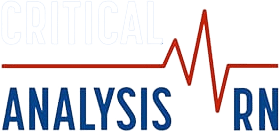According to the Federal Bureau of Investigations (FBI) Uniform Crime Reports, the total number of murders in 2014 in the United States was 11, 961. Out of those murders, gunfire was the leading cause of deaths at 8, 124, but knife wounds and other cutting objects were second with 1, 567. The state with the largest number of knife/cutting instrument deaths in 2014 was California with 256 and Texas coming in second at 145 (The Federal Bureau of Investigation, 2015).
Traumatic Injury Categories
Traumatic injuries can be caused by either blunt force trauma or sharp force trauma. Sharp force trauma is a broad category that covers a large group of objects that could cause these injuries. Objects such as a knife, a razor blade, a broken bottle, or even the metal lid of a can of dog food can cause sharp force injuries. Injuries that are categorized as sharp force injuries produce a wound that typically has a defined separation of the skin and the tissue.
Wound Characteristics
Sharp force trauma injuries have specific characteristics. Typically, the sharp force wound is longer than it is deep and does not leave any “bridging” tissue in the wound. A sharp force object will divide and cut the skin and tissues as it penetrates. There are misconceptions in the medical arena that the terms cut and laceration are the same: this is incorrect.
A laceration is defined as, “… a wound that is produced by the tearing of soft body tissue. This type of wound is often irregular and jagged” (Heller, 2015). A laceration can be caused by injuries suffered in traumas such as a motor vehicle crash, being hit by a hammer or a baseball bat. The wound is jagged in appearance with tissue that remains attached from one side of the wound to the other (See image 1).
A cut is caused by a sharp object (See image 2). Typically, the object is forced in a specific direction along the skin and tissues, while also moving downward. What may also be seen is the wound may tail off at one end and may also be of differing depths; meaning one side may be more superficial than the other (Lynch, 2006).
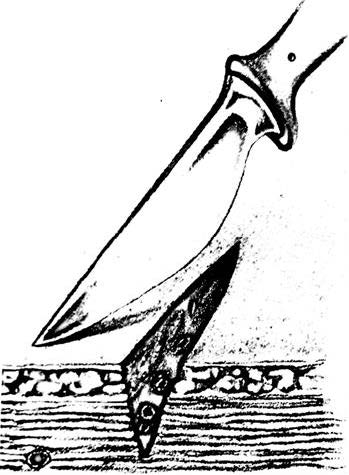
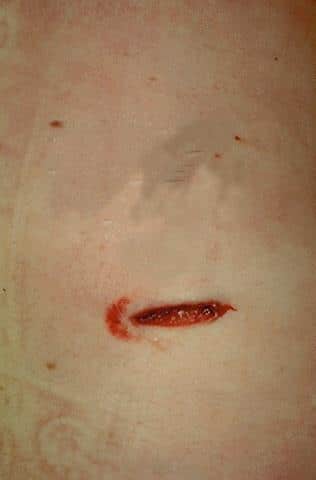
Knife Wounds
A knife wound can have a distinct pattern in itself, especially if the wound is a penetrating wound or puncture. In a sharp force penetrating injury caused by a knife, what can be learned from the wound is directionality, force, blade width, and depth.
Knives have a handle, and at the end of that handle is what is called the hilt (see blue arrow above). In a penetrating knife wound, if the force of the penetration is strong enough, it may cause an abrasion type wound on the skin as the hilt of the knife hits the skin (See image 3). The force may also cause a bruise to the skin as seen in image 4.
This hilt mark then provides the information on depth of the wound as the knife blade would have to penetrate the skin and tissue completely in order to create these markings (See images 3 and 4).


Directionality and blade width may also be determined in a penetrating knife wound. If a hilt mark is present then directionality can be determined easily, but not all penetrating knife wounds have a hilt mark. To determine directionality, the wound itself can provide that information with careful examination. Manipulating the wound by approximating (pushing together) its edges can define potential blade width and directionality. In image 5, the edges have been approximated to show the potential width of the blade and the direction in which it penetrated. As seen in image 6, the wound appears smaller and can therefore provide an incorrect analysis of the blade.
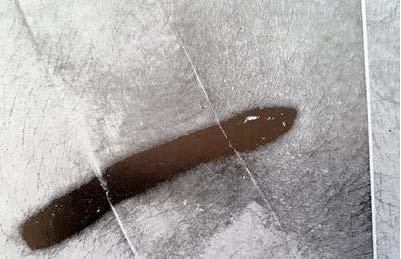
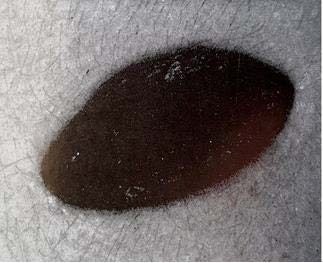
With sharp force injures being the second leading cause of death in the United States, it is imperative the analysis of these wounds be completed by an expert. In sharp force injuries, the wound itself can provide a great deal of information if the examiner is competent in what to look for. Knife injuries have distinct patterns to aid in the investigation of the type of blade used in the assault. These wounds can provide information about the width of the blade, the directionality of the assault, and force of the assault.
To discuss your case, email or call Lori at (432) 661-3639 or fill out the contact form on this site.
Works Cited
Heller, J. (2015, January 12). Laceration vs. Puncture Wound. Retrieved from U.S national Library of Medicine: https://www.nlm.nih.gov/medlineplus/ency/imagepages/19616.htm
Lynch, V. (2006). Forensic Nursing. St. Lois, MO: Elsivier Mosby.
Spitz, W. U. (2006). Medicolegal Investigation of Death . Springfield, Illinois: Charles
C. Thomas.
The Federal Bureau of Investigation. (2015). Uniform Crime Report. Retrieved from 2014 Crime in the United States: https://www.fbi.gov/about-us/cjis/ucr/crime- in-the-u.s/2014/crime-in-the-u.s.-2014/tables/table-20
